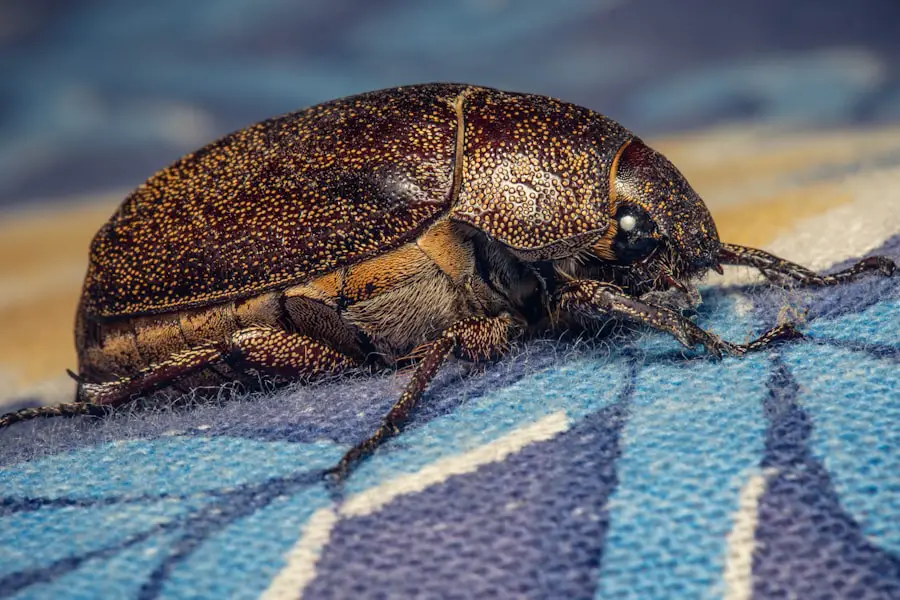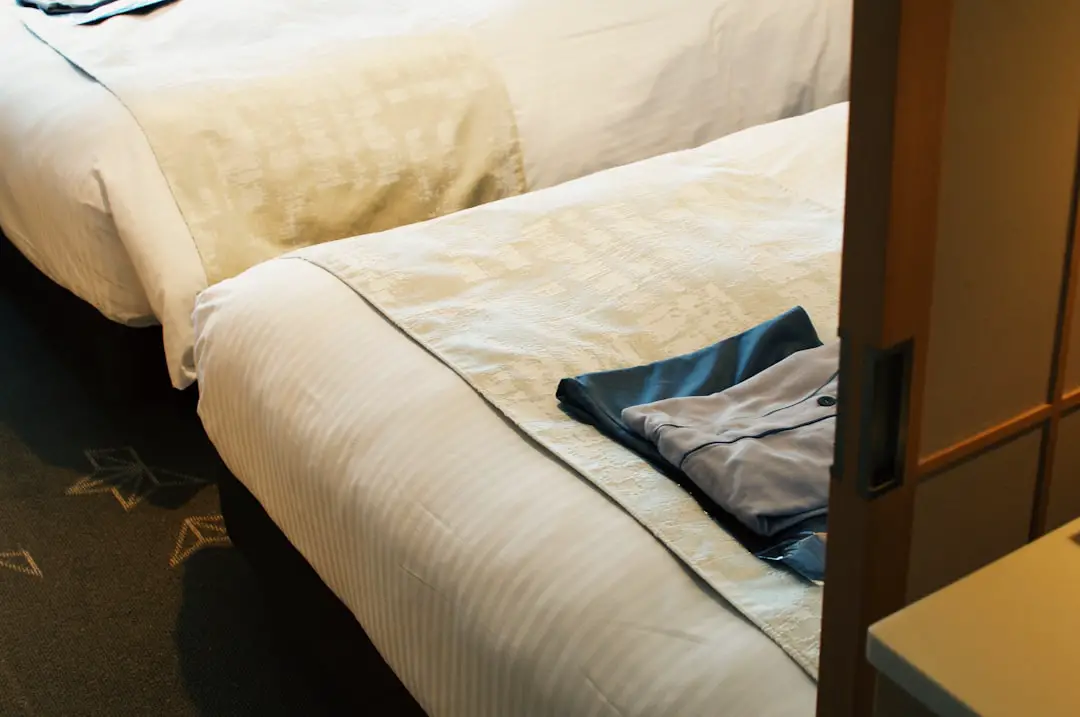Bed bugs, scientifically known as Cimex lectularius, are small, nocturnal insects that feed on the blood of humans and animals. Recognizing the signs of a bed bug infestation is crucial for early detection and effective management. One of the most common indicators is the presence of small, reddish-brown insects themselves, which are about the size of an apple seed.
They tend to hide in crevices during the day, making them difficult to spot without a thorough inspection. Additionally, their excrement appears as tiny dark spots on bedding, mattresses, or walls, which can be mistaken for mold or dirt. These droppings are often found in clusters, indicating a larger population nearby.
Another telltale sign of a bed bug infestation is the presence of shed skins. As bed bugs grow, they molt several times, leaving behind their exoskeletons. These skins can often be found in areas where bed bugs hide, such as seams of mattresses or behind headboards.
Furthermore, an unusual musty odor may emanate from heavily infested areas due to the pheromones released by bed bugs. This scent can be particularly strong in enclosed spaces and is often described as similar to that of overripe raspberries. Recognizing these signs early can help prevent a minor issue from escalating into a full-blown infestation.
Key Takeaways
- Understanding the signs of a bed bug infestation:
- Look for small reddish-brown bugs, dark spots on bedding, and a sweet musty odor.
- Checking for bed bugs in hotel rooms:
- Inspect the mattress, headboard, and furniture for bugs, eggs, or dark spots.
- Identifying bed bug bites:
- Look for red, itchy welts in a line or cluster on exposed skin.
- Inspecting luggage and personal belongings for bed bugs:
- Use a flashlight to check seams and folds of luggage, and wash and dry clothes on high heat after traveling.
- Reporting bed bug infestations to hotel management:
- Notify hotel staff immediately and request a different room or a refund.
- Precautions to take when traveling to prevent bed bug infestations:
- Keep luggage off the floor and use luggage racks, and store belongings in sealed plastic bags.
- What to do if you encounter bed bugs in a hotel:
- Capture a bug in a plastic bag for identification, and document the infestation with photos and a written report.
- Seeking professional help for bed bug infestations:
- Contact a licensed pest control professional for thorough inspection and treatment.
Checking for bed bugs in hotel rooms
When traveling, it is essential to conduct a thorough inspection of hotel rooms upon arrival to ensure they are free from bed bugs. Start by placing your luggage on a hard surface, such as a luggage rack or desk, rather than on the bed or floor. This minimizes the risk of inadvertently bringing any pests home with you.
Begin your inspection by examining the mattress and box spring. Look closely at the seams and edges for any signs of bed bugs or their droppings. It is also wise to check the headboard and any nearby furniture, as these insects often hide in cracks and crevices.
In addition to inspecting the sleeping area, pay attention to other potential hiding spots within the room. Bed bugs can be found in upholstered furniture, curtains, and even behind picture frames. Use a flashlight to illuminate dark corners and crevices where these pests may be lurking.
If you notice any signs of bed bugs during your inspection, it is advisable to request a different room or consider changing hotels altogether. Being proactive in checking for these pests can save you from a troublesome experience during your travels.
Identifying bed bug bites

Bed bug bites can often be mistaken for other insect bites or skin irritations, making identification challenging. Typically, these bites appear as small, red welts that may be itchy and inflamed. They often occur in clusters or lines, as bed bugs tend to bite multiple times in one area while feeding.
To differentiate bed bug bites from other insect bites, consider their location and pattern.
Bed bug bites are commonly found on exposed skin areas such as arms, legs, neck, and face, as these are the parts of the body most accessible while sleeping. Unlike mosquito bites, which may have a single puncture mark, bed bug bites often appear in groups or lines due to the insect’s feeding behavior. If you suspect you have been bitten by bed bugs, it is essential to monitor the affected area for any signs of infection and consult a healthcare professional if necessary.
Inspecting luggage and personal belongings for bed bugs
| Location | Frequency of Inspection | Number of Bed Bugs Found |
|---|---|---|
| Airport | Every 3 months | 5 |
| Hotel | After every guest check-out | 2 |
| Train Station | Monthly | 3 |
After returning from a trip, it is crucial to inspect your luggage and personal belongings for any signs of bed bugs before bringing them into your home. Start by unpacking your suitcase outside or in a garage if possible. Carefully examine all compartments and pockets for any hidden pests or eggs.
Pay special attention to seams and zippers where bed bugs may hide. If you find any evidence of an infestation, it is essential to take immediate action to prevent them from spreading. In addition to inspecting luggage, it is wise to wash all clothing items in hot water upon returning home.
High temperatures can effectively kill any bed bugs or eggs that may have hitched a ride during your travels. For items that cannot be washed, such as shoes or electronics, consider using a steamer or placing them in a hot dryer for at least 30 minutes. Vacuuming your luggage thoroughly can also help eliminate any potential pests before they have a chance to infest your living space.
Reporting bed bug infestations to hotel management
If you discover evidence of a bed bug infestation during your stay at a hotel, it is essential to report it to management immediately. Most hotels take pest control seriously and will appreciate being informed about potential issues so they can address them promptly. When reporting an infestation, provide specific details about your findings, including the location of the evidence and any bites you may have experienced.
This information can help hotel staff take appropriate action to resolve the problem. In many cases, hotels will offer to relocate you to another room or provide compensation for your inconvenience if you report an infestation. It is important to document your findings with photographs if possible, as this can serve as evidence should you need to escalate the issue later on.
Additionally, consider leaving a review online detailing your experience; this not only informs other travelers but also encourages hotels to maintain high standards of cleanliness and pest control.
Precautions to take when traveling to prevent bed bug infestations

Preventing bed bug infestations while traveling requires vigilance and proactive measures. One effective strategy is to choose accommodations that have positive reviews regarding cleanliness and pest control practices. Researching hotels before booking can help ensure that you select a reputable establishment that prioritizes guest safety and comfort.
Additionally, consider using protective luggage covers designed specifically to keep pests out while traveling. When packing for your trip, consider using hard-shell suitcases instead of soft-sided bags, as they are more difficult for bed bugs to penetrate. Once you arrive at your destination, keep your belongings elevated off the floor and away from potential hiding spots by using luggage racks or tables.
Avoid placing bags on beds or upholstered furniture where bed bugs may be lurking. By taking these precautions before and during your travels, you can significantly reduce the risk of encountering bed bugs.
What to do if you encounter bed bugs in a hotel
Encountering bed bugs in a hotel can be distressing; however, knowing how to respond can help mitigate the situation effectively. First and foremost, remain calm and avoid panicking. If you discover evidence of bed bugs after settling into your room, do not hesitate to contact hotel management immediately.
While waiting for assistance from hotel staff, take steps to minimize the risk of spreading bed bugs to your belongings. Keep your luggage closed and elevated off the floor while you await further instructions from management.
If possible, move away from the infested area until you receive guidance on how to proceed. Document any evidence you find with photographs for future reference or potential claims against the hotel.
Seeking professional help for bed bug infestations
If you suspect that you have brought bed bugs home after traveling or if you discover an infestation in your living space, seeking professional help is crucial for effective eradication. Pest control experts have specialized knowledge and tools designed specifically for dealing with bed bug infestations. They will conduct a thorough inspection of your home to identify problem areas and determine the extent of the infestation.
Professional extermination typically involves multiple treatment methods tailored to your specific situation. This may include heat treatments that raise the temperature in infested areas to levels lethal for bed bugs or chemical treatments that target their life cycle effectively. Additionally, pest control professionals will provide guidance on preventive measures you can take moving forward to avoid future infestations.
By enlisting expert help, you can ensure that your home is free from these persistent pests and restore peace of mind for you and your family.
If you are concerned about encountering bed bugs during your travels, it is important to know how to spot the signs of an infestation in your hotel room. One helpful article to check out is this guide on the best carry-on luggage for international travel. By packing smart and keeping your belongings organized, you can minimize the risk of bringing bed bugs home with you.
FAQs
What are bed bugs?
Bed bugs are small, reddish-brown insects that feed on the blood of humans and animals. They are typically found in and around sleeping areas, such as beds and sofas.
How can I tell if a hotel has bed bugs?
You can look for signs of bed bugs in hotel rooms by checking for small reddish-brown bugs, dark spots on bedding or furniture, and a sweet musty odor. You can also look for shed bed bug skins and small white eggs.
What should I do if I suspect a hotel has bed bugs?
If you suspect a hotel has bed bugs, you should notify the hotel staff immediately and request a different room. You should also inspect your luggage and clothing for any signs of bed bugs before leaving the hotel.
Can I prevent bringing bed bugs home from a hotel?
To prevent bringing bed bugs home from a hotel, you can inspect your hotel room for signs of bed bugs before unpacking, keep your luggage off the floor and bed, and wash and dry your clothing on high heat when you return home.
Can bed bugs be found in all hotels?
Bed bugs can be found in any hotel, regardless of its star rating or cleanliness. They can be brought in by guests or hitch a ride on luggage, clothing, or furniture. Regular cleaning and maintenance can help prevent bed bug infestations, but no hotel is completely immune.
